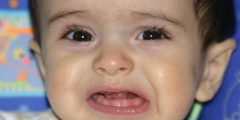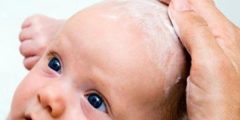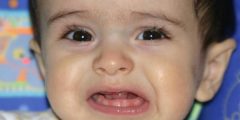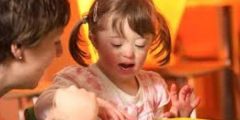Tips to get rid of constipation in children
Most cases of constipation in children are treated by making lifestyle changes at home, as detailed below.
change diet
Changing the diet, including adhering to a specific schedule for eating meals, helps treat constipation in children. The following are the points that are recommended to be followed for this:
- Commitment to balanced meals and snacks.
- Introducing more fiber into the child’s diet, by trying to adhere to the following:
- Eat more fruits and vegetables.
- Add whole wheat cereals and bread to the child's diet.
- Pay attention to nutritional labels on food packages; In order to select those that contain a higher percentage of fiber.
- Avoid foods and drinks that do not contain fiber, or even those that contain a small percentage of it, such as: ice cream, cheese, potato chips, ready-made meals, and processed foods.
- Avoid fast-prepared meals, which usually contain a high percentage of fat.
- Reduce consumption of drinks containing caffeine such as tea and soda.
- Reduce consumption of whole milk by consulting your health care provider.
- Providing breakfast early for the child; This is with the aim of giving the child’s body enough time to have a bowel movement, i.e. excretion, before going to school, as the bowel movement usually occurs within 30-60 minutes after finishing eating.
- Drink plenty of water and fluids, to help facilitate the movement of stool into the intestines. The amount of water and fluids to drink varies depending on the weight and age of the child, but 3-4 cups of water per day is appropriate for most school-age children.
Read also:Treatment for colds in children
exercise
People who do not move a lot are usually susceptible to constipation, and therefore helping the child to exercise more is beneficial in cases of constipation, due to its effect on the digestion process, as exercise helps facilitate the natural movements of the intestines, which is represented by pushing the food during its digestion, and this is By encouraging the child to play outside, or practice various activities inside the house instead of watching television.
Follow healthy bowel habits
It is important to try to accustom the child to the habit of going to the bathroom on a regular basis. The child must be encouraged to do so a few times a day, especially 20-30 minutes after eating breakfast and dinner, as this helps to benefit from the natural intestinal contractions that occur after eating. Attention should be paid here to encourage the child to sit on the toilet even if the child does not feel the need to excrete. It is important while the child is sitting to maintain a certain position that helps the child use the muscles necessary for excretion. This is done by placing his feet on a small chair so that the knees are higher than the level of the toilet. The hips. You should also pay attention to making the child lean forward slightly while keeping the back straight. The child may need to support his elbows on his thighs. It is recommended that the child maintain this position for a period ranging between 3-5 minutes without distractions such as books, screens, etc. To help with this, it is possible to reward When the child sits on the toilet, even if he does not urinate, it is important here to use a reward appropriate for the child’s age and avoid punishing the child if he does not urinate. It is necessary to motivate the child to go directly to the bathroom as soon as he feels the need to urinate.
Read also:Sixth month vaccination
Pharmacological treatment of constipation in children
Treatment of constipation in children depends on the symptoms that the child suffers from, the severity of the condition, in addition to age and general health. In some cases, some of the medications that the child takes, whether they require a prescription or those that do not, or nutritional supplements, may cause constipation, and then they may cause constipation. The doctor advises stopping the medication, changing the dose, or replacing the medication with another. It is important here to be careful not to stop any medication the child is taking without consulting the doctor. If the lifestyle changes mentioned previously are not helpful in solving the child’s constipation problem, a provider may diagnose Health care: If he has another problem, then some drug treatments may be resorted to, such as: laxatives, stool softeners, or what are called stool softeners, or enemas, etc. It is worth noting that these treatments can only be used based on the recommendation of a health care provider, and they should not be used without first talking to him. Below is a breakdown of the different medicinal options:
- Stool softeners or high-fiber supplements: The natural fibers found in psyllium husk, which can be mixed with the child's food, may help soften the stool, but the child must drink approximately one liter of water on a daily basis to ensure that these products work effectively, and it is possible to use glycerin suppositories. (English: Glycerin suppositories) In cases of children who have difficulty swallowing pills, it is important to speak with a doctor in order to know the correct way to use them.
- Laxatives: Laxatives can be obtained in pharmacies without the need for a prescription, but it is not recommended to use them for children without seeking medical advice. The various options for laxatives include the following:
- Liquid paraffin: Liquid paraffin is available in different flavors, and in turn helps lubricate the stool to facilitate its movement out of the body.
- Polyethylene glycols: Polyethylene glycol is available in the form of sachets that are mixed with water to soften stool.
- Lactulose: Lactulose is available in the form of a sweet-tasting liquid that softens the stool and stimulates bowel movement. It is preferable to mix it with milk or juice, and its use may cause flatulence.
- Docusate: This medication is available in the form of pills or drops, which is suitable for children younger than 3 years old. This medication works by softening the stool.
- Senna: Senna is available in the form of pills and granules that stimulate bowel movement. These granules can be mixed with food, such as cooked apples, for example. It is worth noting that the child may experience diarrhea or stomach cramps if he eats it. For a high dose of senna.
- Bisacodyl: Bisacodyl is available in the form of pills or drops that stimulate bowel movement and may cause stomach cramps.
- Enemas: In enemas, certain pills or liquid are placed inside the anus in order to stimulate the rectum to secrete its contents. It is worth noting that these injections do not soften the stool located at the top of the intestine, and they are usually used in severe cases of constipation, and when their effectiveness is compared with the effectiveness of laxatives. Orally, the effectiveness of the latter is higher, in addition to being less painful for the child. Attention must be paid to never resorting to enemas without a doctor’s advice to do so.
- Bowel irrigation: (English: Bowel irrigation) Intestinal irrigation is used in cases of children with severe constipation to the point of needing to be admitted to the hospital. Their intestines are irrigated with a specific liquid that is drunk or inserted into the stomach through a nasogastric tube (in English: Nasogastric tube).
Read also:Shaving the newborn's hair
Treatment of fecal impaction in children
Severe constipation causes what is known as fecal impaction (in English: Impaction), in which a large amount of stool accumulates in the lower part of the intestine, closest to the anus, specifically in the rectum. This causes various symptoms, including in particular causing the release of soft stool on the child’s underwear or The release of mucus mixed with stool, and then the parents may confuse the condition, thinking that it is a symptom of diarrhea. As for treatment, the treatment of constipation is similar to the treatment of fecal impaction, and the main difference lies in the need for higher doses of laxatives to clean the rectum of the impacted stool, and the child also needs For maintenance treatment (in English: Maintenance treatment), that is, continuing to take a dose for a longer period with the aim of preventing stool from accumulating again as a preventive means of preventing impaction, and with the passage of time the rectum begins to return to its normal size and work gradually efficiently, as stopping the laxative dose early may It leads to the accumulation of feces in the weak areas of the rectum that did not take enough time to return to its normal size and strength. It is worth noting that children for whom various treatments have not succeeded in solving the problem of fecal impaction are treated in the hospital, with the help of enemas, and the situation may lead to resorting to The doctor will numb the child with a general anesthetic and start removing the stool manually in very difficult cases.









